The Mardi Himal Trek has quickly become one of Nepal's most sought-after hiking adventures, and we're here to show you exactly why. This relatively new trekking route offers stunning Annapurna views, diverse landscapes, and authentic cultural experiences without the crowds of more popular trails.
We've designed this comprehensive guide for adventure seekers, photography enthusiasts, and anyone dreaming of their first Himalayan experience. Whether you're a seasoned trekker or planning your inaugural mountain adventure, this trek delivers incredible rewards with manageable challenges.
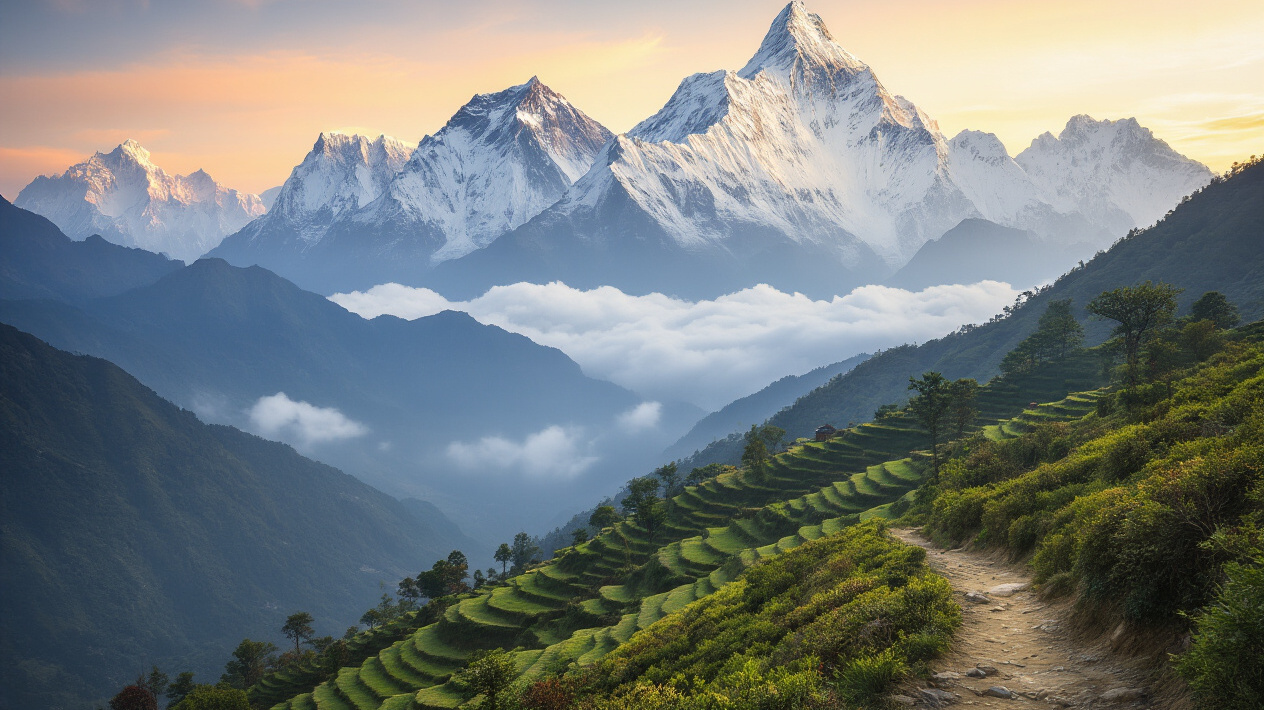
Our guide covers everything you need to know before lacing up your boots. We'll walk you through the essential planning steps and preparation requirements that make the difference between a good trek and an unforgettable one. You'll also get our detailed day-by-day breakdown of the route, including insider tips we've gathered from years of organizing these expeditions.
We'll share practical insights about accommodation options along the trail, from cozy teahouses to camping alternatives, plus what to expect for meals in the mountains. Most importantly, we'll cover the safety considerations that keep our trekkers secure and the photography techniques that help capture those once-in-a-lifetime Himalayan moments.
Get ready to discover why the Mardi Himal Trek might just be the perfect Himalayan adventure you've been searching for.
Essential Trek Overview and What Makes It Special

Trek Distance, Duration, and Difficulty Level Breakdown
We've designed the Mardi Himal Trek as a perfect middle-ground adventure that spans approximately 40-50 kilometers of diverse terrain. Our standard itinerary covers this distance over 5-7 days, depending on your preferred pace and acclimatization needs. We typically recommend the 6-day option for first-time trekkers, which allows comfortable daily walking distances of 4-8 hours.
The trek sits comfortably in the moderate difficulty category, making it accessible for trekkers with basic fitness levels. We've found that anyone who can walk for 5-6 hours daily on varied terrain will handle this trek well. The highest point we reach is Mardi Himal Base Camp at 4,500 meters, which means we deal with altitude but not extreme elevation challenges.
Our route involves steady ascents through rhododendron forests, alpine meadows, and rocky terrain. We encounter some steep sections, particularly on the final approach to Base Camp, but nothing that requires technical climbing skills. The trail conditions vary from well-maintained paths in lower sections to narrower, more rugged tracks as we gain altitude.
Stunning Panoramic Mountain Views You'll Experience
We guarantee some of Nepal's most spectacular mountain panoramas on this trek. Our crown jewel viewpoint offers unobstructed views of the entire Annapurna range, including Annapurna South (7,219m), Hiunchuli (6,441m), and the magnificent Machapuchare (6,993m) - the sacred "Fish Tail" mountain that dominates the skyline.
From Mardi Himal Base Camp, we witness a breathtaking 360-degree mountain amphitheater. The sunrise views here rank among Nepal's finest, painting the peaks in golden and pink hues that create unforgettable photographic opportunities. We also enjoy clear sights of Annapurna I (8,091m), Gangapurna (7,455m), and on exceptionally clear days, distant glimpses of Dhaulagiri.
What sets our Mardi Himal experience apart is the intimacy of these mountain views. Unlike crowded viewpoints on other treks, we often have these spectacular vistas to ourselves, creating a more personal connection with the Himalayas.
Cultural Highlights and Local Village Encounters
We immerse ourselves in authentic Gurung and Magar culture throughout this trek. Our journey begins in traditional villages where we observe daily rural life unchanged for generations. We visit local homes, witness traditional farming practices, and experience genuine mountain hospitality.
The villages of Dhampus and Pothana offer our first cultural encounters, where we interact with locals engaged in agriculture and tourism. We observe traditional stone houses with slate roofs, terraced fields carved into mountainsides, and ancient water mills still grinding grain.
Our tea house stays provide intimate cultural exchanges with local families who've been welcoming trekkers for decades. We share meals prepared with locally grown ingredients, learn about traditional Himalayan cooking methods, and hear stories about mountain life. These interactions give us genuine insights into how communities adapt to harsh mountain environments while preserving their cultural heritage.
Best Seasons for Optimal Weather and Visibility
We recommend two prime seasons for the Mardi Himal Trek, each offering distinct advantages. Spring (March-May) provides our favorite trekking conditions, with rhododendrons blooming in spectacular displays of red, pink, and white. Temperatures remain comfortable, ranging from 10-20°C during the day at lower elevations, while nights can drop to -5°C at higher camps.
Autumn (September-November) offers our clearest mountain views and most stable weather patterns. We experience crisp, clear days perfect for photography, with minimal precipitation and excellent visibility. Daytime temperatures hover around 15-20°C in lower regions, dropping to -10°C at Base Camp during nights.
We avoid monsoon season (June-August) due to heavy rainfall, leeches, and obscured mountain views. Winter (December-February) presents challenges with snow, extreme cold, and potentially dangerous conditions above 3,500 meters. However, experienced winter trekkers find this season offers solitude and stunning snow-covered landscapes, though we require specialized gear and careful planning for these conditions.
Pre-Trek Planning and Preparation Requirements
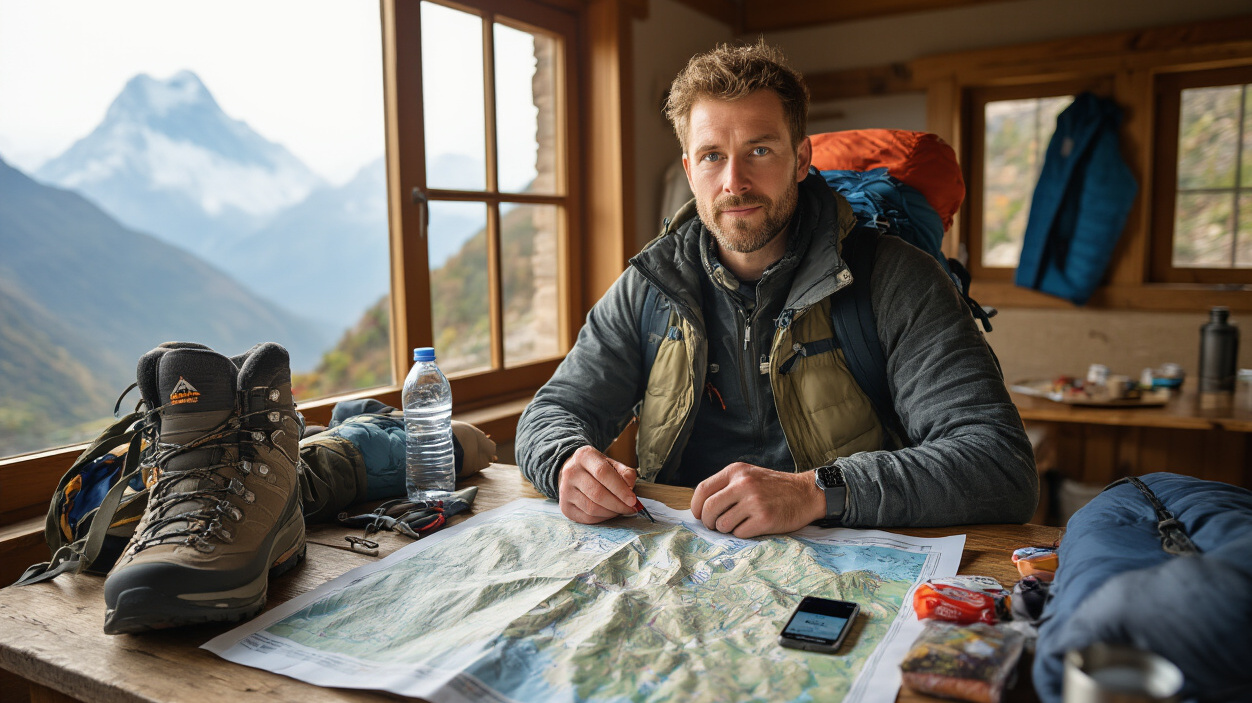
Physical fitness training and conditioning tips
Getting your body ready for the Mardi Himal Trek starts months before you lace up those hiking boots. We recommend beginning your training program at least 6-8 weeks before departure, focusing on building both cardiovascular endurance and leg strength.
Start with regular cardio exercises like running, cycling, or swimming for 30-45 minutes, 4-5 times per week. Gradually increase the intensity and duration as your fitness improves. Hiking on local trails with a loaded backpack becomes crucial - we suggest carrying 8-12 kg to simulate actual trekking conditions.
Strength training should target your legs, core, and back muscles. Squats, lunges, step-ups, and calf raises will prepare your legs for the steep ascents and descents. Don't forget your core - planks and mountain climbers will help you maintain balance on uneven terrain.
We always tell our trekkers that stair climbing is one of the best preparation exercises. Find a tall building or use a StairMaster machine for 20-30 minutes daily. This directly mimics the repetitive uphill motion you'll experience on the trail.
Practice walking on different surfaces - rocky paths, loose gravel, and muddy trails. Your ankles need to adapt to unstable ground. We also recommend breaking in your trekking boots during training hikes to prevent blisters and discomfort during the actual trek.
Required permits and documentation process
The permit requirements for Mardi Himal Trek are straightforward, but we handle all the paperwork to make your experience seamless. You'll need two main permits: the Annapurna Conservation Area Permit (ACAP) and the Trekkers' Information Management System (TIMS) card.
The ACAP costs NPR 3,000 (approximately $25) for foreign nationals and is valid for the entire Annapurna region. We obtain this permit from the Nepal Tourism Board office in Kathmandu or the ACAP counter in Pokhara. The TIMS card, priced at NPR 2,000 (around $17), serves as a security measure and helps track trekkers in the region.
For documentation, you'll need your original passport with at least six months validity remaining, plus two passport-sized photographs. We create photocopies of your passport's main page and entry stamp - keep these separate from your original documents.
We strongly recommend getting comprehensive travel insurance that covers high-altitude trekking up to 4,500 meters and emergency helicopter evacuation. Many standard policies don't include these essential coverages, so read the fine print carefully.
Our team collects all necessary documents and permit fees before departure, ensuring everything is processed correctly. We also provide you with digital copies of all permits and documents, stored securely on your phone as backup.
Essential gear and equipment checklist
Packing the right gear can make or break your Mardi Himal experience. We've refined this checklist through years of guiding trekkers, focusing on items that truly matter in the mountains.
Clothing:
-
Moisture-wicking base layers (merino wool preferred)
-
Insulating mid-layers (fleece or down jacket)
-
Waterproof and breathable outer shell
-
Trekking pants and shorts
-
Warm hat and sun hat
-
Insulated gloves and liner gloves
-
Buff or neck gaiter
Footwear:
-
Sturdy, broken-in trekking boots
-
Comfortable camp shoes (lightweight sneakers)
-
Moisture-wicking hiking socks (bring 4-5 pairs)
-
Gaiters for muddy or snowy conditions
Technical Gear:
-
40-50L backpack with rain cover
-
Sleeping bag rated to -10°C
-
Trekking poles (essential for knee protection)
-
Headlamp with extra batteries
-
Water bottles or hydration system
-
Water purification tablets or UV sterilizer
Personal Items:
-
First aid kit with altitude sickness medication
-
Sunglasses (glacier glasses recommended)
-
Sunscreen SPF 50+
-
Personal toiletries and quick-dry towel
-
Camera with extra batteries and memory cards
We provide detailed packing lists tailored to the season and weather conditions expected during your trek.
Budget planning and cost breakdown
Understanding the true cost of the Mardi Himal Trek helps you plan effectively and avoid unexpected expenses. We break down costs into essential categories so you can budget accordingly.
Trek Package Costs:
Our guided Mardi Himal Trek packages range from $450-$750 per person, depending on group size and service level. This includes professional guides, porter services, permits, accommodation in teahouses, and most meals along the route.
Additional Expenses:
|
Category |
Cost Range (USD) |
Notes |
|
International flights |
$800-1,500 |
Varies by season and origin |
|
Nepal visa |
$30-125 |
Duration dependent |
|
Travel insurance |
$80-150 |
High-altitude coverage essential |
|
Gear rental |
$15-25/day |
If not purchasing |
|
Tips for guides/porters |
$50-80 |
Customary and appreciated |
|
Extra meals/drinks |
$100-150 |
Personal preferences |
|
Emergency fund |
$200-300 |
Unexpected situations |
Money-Saving Tips:
We recommend booking during shoulder seasons (March-April, October-November) for better rates and fewer crowds. Group bookings reduce per-person costs significantly. Renting gear in Kathmandu or Pokhara costs much less than purchasing, especially for items you won't use regularly.
Most teahouses accept Nepali rupees only, so exchange money before starting the trek. We advise carrying cash in small denominations, as making change can be difficult in remote areas. ATMs are available in Pokhara but become scarce once you begin trekking.
Budget an extra 20% buffer for unexpected costs - weather delays, additional porter fees, or medical expenses can add up quickly in the mountains.
Detailed Day-by-Day Itinerary Breakdown
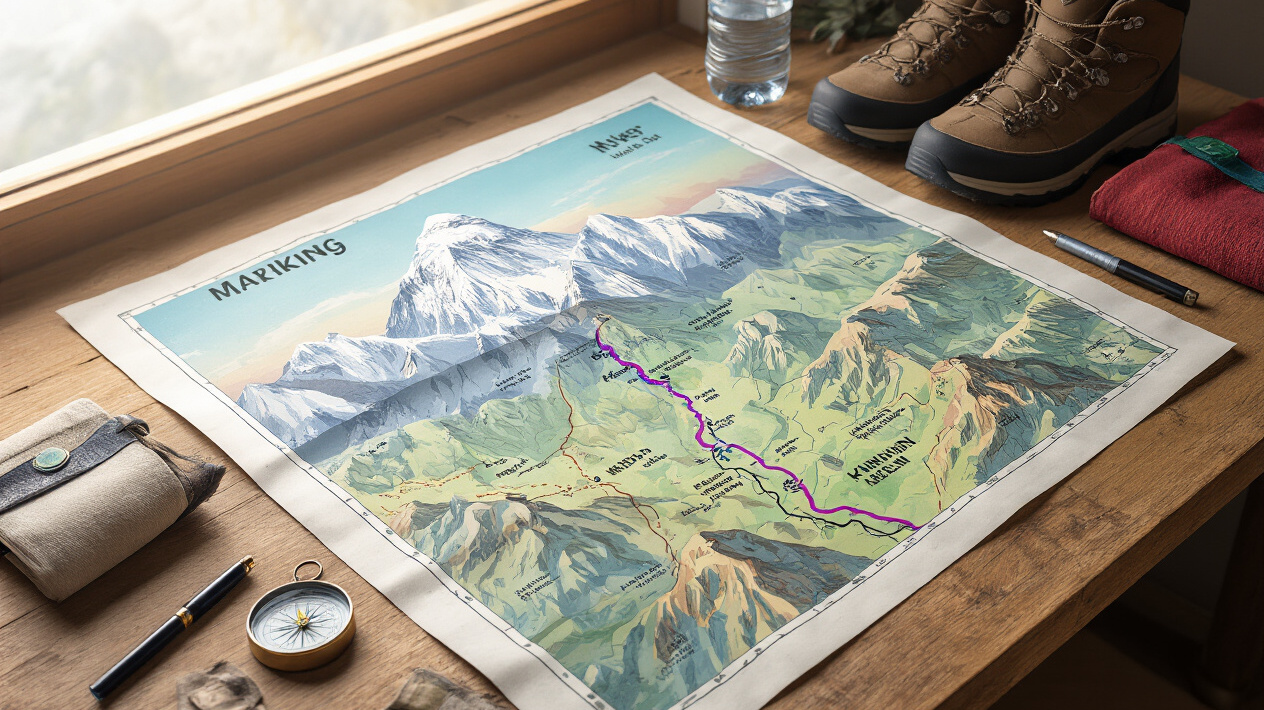
Day 1-2: Kathmandu to Pokhara and trek start
Our adventure begins with the scenic journey from Kathmandu to Pokhara, either by domestic flight (25 minutes) or tourist bus (6-7 hours). We recommend the flight option for those short on time, though the overland route offers stunning glimpses of rural Nepal and terraced hillsides. Upon reaching Pokhara, we spend the night at our comfortable hotel, allowing time to finalize permits and gear checks.
The following morning marks our official trek start as we drive from Pokhara to Kande (1,770m), approximately 45 minutes through winding hill roads. From Kande, we begin our trek toward Australian Camp (2,060m), a gentle 2-3 hour walk that serves as perfect acclimatization. The trail winds through local villages where we encounter friendly Gurung communities and witness traditional mountain life.
Our first overnight stop at Australian Camp rewards us with panoramic views of the Annapurna range, including Machhapuchhre (Fishtail) and Hiunchuli. The teahouses here provide basic but comfortable accommodation, and we enjoy our first taste of dal bhat while watching the sunset paint the peaks in golden hues. This initial stretch helps our bodies adjust to the altitude and mountain rhythm before the more challenging days ahead.
Day 3-4: Forest camps and rhododendron trails
We continue our ascent from Australian Camp to Forest Camp (2,520m), following well-marked trails through dense rhododendron and oak forests. This 4-5 hour trek takes us deeper into the wilderness, where we often spot colorful bird species and occasionally glimpse langur monkeys swinging through the canopy. The forest section provides excellent shade and protection from wind, making it particularly enjoyable during spring when rhododendrons bloom in vibrant reds and pinks.
Forest Camp offers basic teahouse accommodation surrounded by towering trees. The evening atmosphere here feels magical as we gather around common areas, sharing stories with fellow trekkers while listening to the forest sounds. Our second day in this section leads us to Low Camp (3,035m), a 3-4 hour trek that gradually emerges from dense forest into alpine terrain.
The transition from forest to open terrain becomes noticeable as we approach Low Camp, where stunning mountain views begin revealing themselves between clearing trees. We notice the air becoming thinner and temperatures dropping, especially during evening hours. Our accommodation at Low Camp positions us perfectly for the challenging summit push, with clear views of our upcoming route toward High Camp visible on good weather days.
Day 5-6: High camp and summit day experience
Day five brings our most challenging ascent as we trek from Low Camp to High Camp (3,580m). This 3-4 hour climb tests our endurance as we navigate steep, rocky terrain with increasingly thin air. The trail becomes more exposed, requiring careful footing and steady pacing. We take frequent breaks to admire the expanding mountain panorama and allow our bodies to adjust to the significant altitude gain.
High Camp sits dramatically on a ridge with 360-degree mountain views that make every step of the challenging climb worthwhile. The teahouse accommodation here is more basic but perfectly positioned for our summit attempt. We spend the afternoon resting, hydrating, and preparing gear for the early morning summit push to Mardi Himal Base Camp (4,500m).
Summit day starts before dawn with a challenging 2-3 hour climb to Mardi Himal Base Camp. The trail becomes steep and sometimes icy, requiring careful navigation. Reaching the base camp viewpoint rewards us with breathtaking close-up views of Mardi Himal, Machhapuchhre, Annapurna South, and Hiunchuli. The sense of achievement feels overwhelming as we stand among these towering giants, taking photos and savoring the moment before beginning our careful descent back to High Camp. The return journey offers different perspectives of the same spectacular scenery, allowing us to appreciate details missed during our focused ascent.
Day 7-8: Descent route and return journey
Our descent begins from High Camp toward Siding Village (1,280m), following a different route that showcases new landscapes and cultural experiences. This alternative path takes us through traditional Gurung villages where we observe authentic mountain life and interact with local families. The descent proves easier on our lungs but challenging on our knees, requiring trekking poles and careful foot placement on steep sections.
We overnight in Siding Village, experiencing authentic homestay accommodation or local teahouses that provide insight into traditional mountain culture. The village setting offers a peaceful contrast to the high-altitude camps, with terraced fields, water buffalo, and children playing in courtyards. Our final trekking day leads us to Lwang Village, where we catch transportation back to Pokhara.
The drive from Lwang to Pokhara takes approximately 2 hours, allowing us to reflect on our incredible mountain adventure while watching the landscape transition from alpine terrain back to subtropical valleys. Upon reaching Pokhara, we celebrate our successful trek with well-deserved hot showers, comfortable beds, and perhaps a lakeside dinner overlooking Phewa Lake. Many trekkers choose to extend their stay in Pokhara for relaxation and souvenir shopping before returning to Kathmandu, creating perfect closure to this unforgettable Himalayan experience.
Accommodation and Dining Options Along the Route
Teahouse Facilities and Booking Recommendations
We've found that teahouses along the Mardi Himal Trek offer authentic Nepali hospitality with basic but comfortable amenities. Most teahouses feature simple rooms with twin beds, shared bathrooms, and communal dining areas where trekkers gather to share stories. Our experience shows that rooms typically cost between $5-15 per night, depending on altitude and season.
We recommend booking ahead during peak seasons (March-May and September-November), especially for higher altitude lodges like those at High Camp. Many teahouse owners now use mobile phones, making advance reservations possible. We always suggest carrying cash in Nepali rupees, as card payments aren't widely accepted.
Popular Teahouse Locations:
-
Forest Camp: Basic facilities with hot showers
-
Low Camp: Better amenities, stunning mountain views
-
High Camp: Limited options but incredible sunrise views
-
Badal Danda: Newest facilities along the route
We've noticed that teahouses at higher elevations have fewer amenities but charge premium prices for essentials like hot water and charging devices. WiFi availability decreases significantly above Forest Camp, so we advise downloading offline maps and entertainment beforehand.
Camping Options for Adventurous Trekkers
Camping opens up incredible opportunities for solitude and flexibility on our Mardi Himal adventures. We can set up camps at designated areas with stunning views that teahouse trekkers often miss. The trek offers several excellent camping spots, including scenic meadows below Mardi Himal Base Camp and ridge locations with panoramic mountain vistas.
We bring all necessary camping equipment, including four-season tents, sleeping bags rated for sub-zero temperatures, and portable cooking gear. Our camping permits cost around $10-15 per person per night at designated sites. We always follow Leave No Trace principles, packing out all waste and using established camping areas to minimize environmental impact.
Best Camping Locations:
-
Ridge above High Camp: 360-degree mountain views
-
Mardi Himal Base Camp area: Close to the peak
-
Meadows near Low Camp: Protected from wind
-
Forest clearings: Lower altitude options
Weather conditions change rapidly at higher elevations, so we pack extra layers and waterproof gear. We also coordinate with local authorities and hire experienced guides familiar with safe camping practices and weather patterns.
Local Cuisine Highlights and Meal Expectations
Dal bhat (rice, lentils, and vegetables) forms the cornerstone of our mountain dining experience, served fresh and hot at virtually every teahouse. We love how this traditional meal provides sustained energy for long trekking days while introducing us to authentic Nepali flavors. Most teahouses serve generous portions with unlimited refills of rice and dal.
Our favorite discoveries include momos (dumplings), thukpa (noodle soup), and Sherpa stew - hearty dishes perfect for cold mountain evenings. We've learned that western dishes like pasta and pizza are available but often lack authenticity and cost more than local options. Fresh vegetables become scarcer at higher altitudes, with meals focusing more on preserved foods and starches.
Typical Daily Meal Costs:
-
Breakfast: $3-5 (porridge, eggs, tea)
-
Lunch: $4-7 (noodles, rice dishes)
-
Dinner: $5-10 (dal bhat, meat dishes)
We always order hot drinks like masala tea or ginger lemon honey tea to stay warm and hydrated. Bottled water becomes expensive above 3000m, so we bring purification tablets or UV sterilizers. Alcohol availability decreases significantly at higher altitudes, and we avoid it anyway since it affects acclimatization.
We suggest trying local specialties like gundruk (fermented leafy greens) and sel roti (traditional ring-shaped bread) when available. Vegetarian options are abundant and often fresher than meat dishes, which may be limited at remote locations.
Safety Considerations and Risk Management
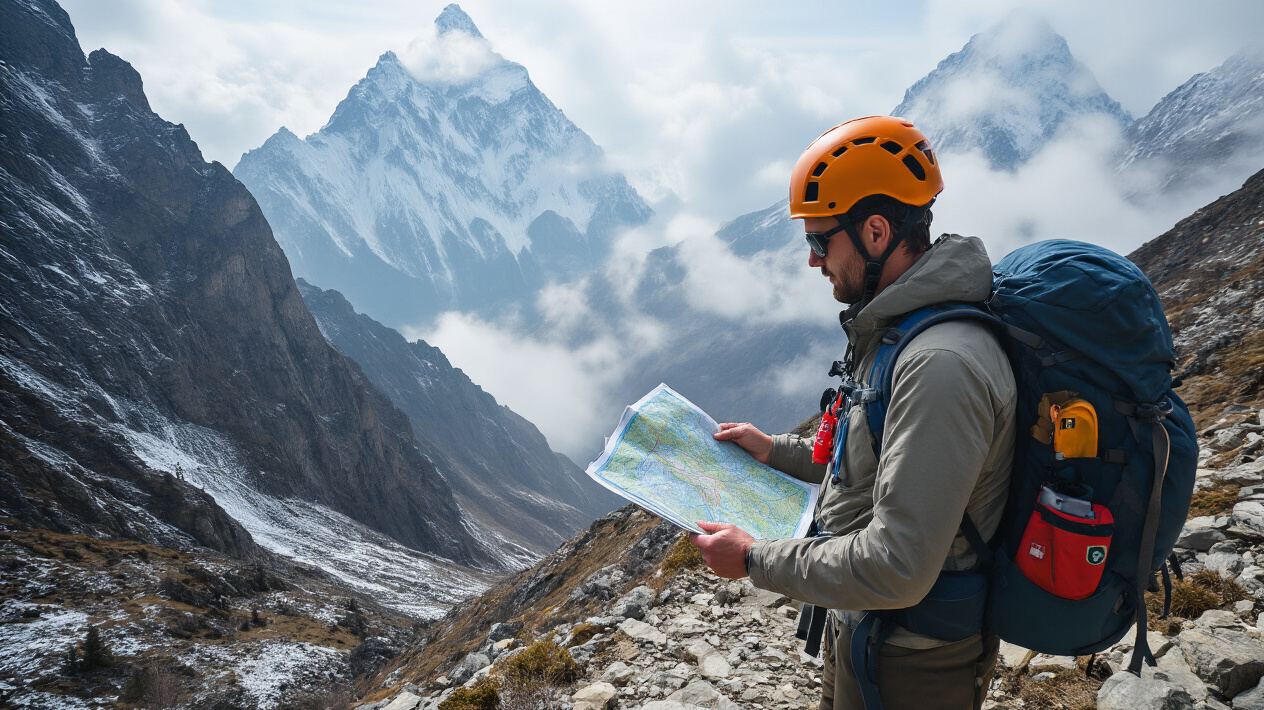
Altitude Sickness Prevention and Recognition
At elevations reaching 4,500 meters at Mardi Himal Base Camp, we take altitude-related risks seriously. Our team monitors trekkers closely for symptoms including headaches, nausea, dizziness, fatigue, and loss of appetite. We maintain a conservative ascent profile, gaining no more than 500 meters per day above 3,000 meters.
We recommend arriving in Kathmandu 2-3 days early for acclimatization and staying hydrated throughout the trek. Our guides carry pulse oximeters to monitor oxygen saturation levels, and we've established strict protocols for descent if symptoms worsen. Warning signs we watch for include severe headaches unrelieved by medication, vomiting, confusion, and difficulty breathing at rest.
We stock Diamox (acetazolamide) in our medical kits and can arrange immediate descent if acute mountain sickness progresses to cerebral or pulmonary edema. Our guides are trained in altitude sickness recognition and response protocols.
Weather Challenges and Emergency Protocols
Mountain weather changes rapidly in the Annapurna region. We monitor forecasts daily and adjust itineraries when necessary. Our emergency protocols include predetermined evacuation routes, satellite communication devices, and partnerships with helicopter rescue services.
During monsoon season (June-August), we cancel departures due to landslide risks and poor visibility. Winter treks face snow, ice, and sub-zero temperatures requiring specialized gear. We carry emergency shelters, first aid supplies, and backup communication equipment on every trek.
Our guides receive weather updates twice daily and make real-time decisions about route safety. We maintain emergency supply caches at key points and have established relationships with local rescue teams.
Communication and Evacuation Procedures
We equip all groups with satellite phones and GPS devices for emergencies. Cell phone coverage exists sporadically along the route, primarily near larger villages like Ghandruk and Forest Camp.
Our evacuation procedures prioritize helicopter rescue from designated landing zones at Deurali, High Camp, and Australian Camp. We coordinate with Fishtail Helicopters and Simrik Air for emergency services, with typical response times of 2-4 hours in good weather.
We maintain 24/7 emergency contact with our Kathmandu office and provide families with regular updates. Each trekker receives an emergency contact card with crucial numbers and evacuation procedures in English and Nepali.
Travel Insurance Requirements and Recommendations
We require comprehensive travel insurance covering helicopter evacuation up to 6,000 meters minimum. Standard policies rarely include high-altitude rescue, which can cost $5,000-15,000 USD.
We recommend World Nomads, IMG Global, or Allianz policies specifically covering adventure activities. Coverage must include emergency medical treatment, evacuation, trip cancellation, and gear replacement. We verify insurance documentation before departure and maintain copies throughout the trek.
Our preferred policies cover pre-existing medical conditions, altitude-related illnesses, and weather-related delays. We provide detailed insurance guidance during pre-trek briefings and maintain relationships with insurance providers for claim assistance.
Photography Tips and Must-Capture Moments
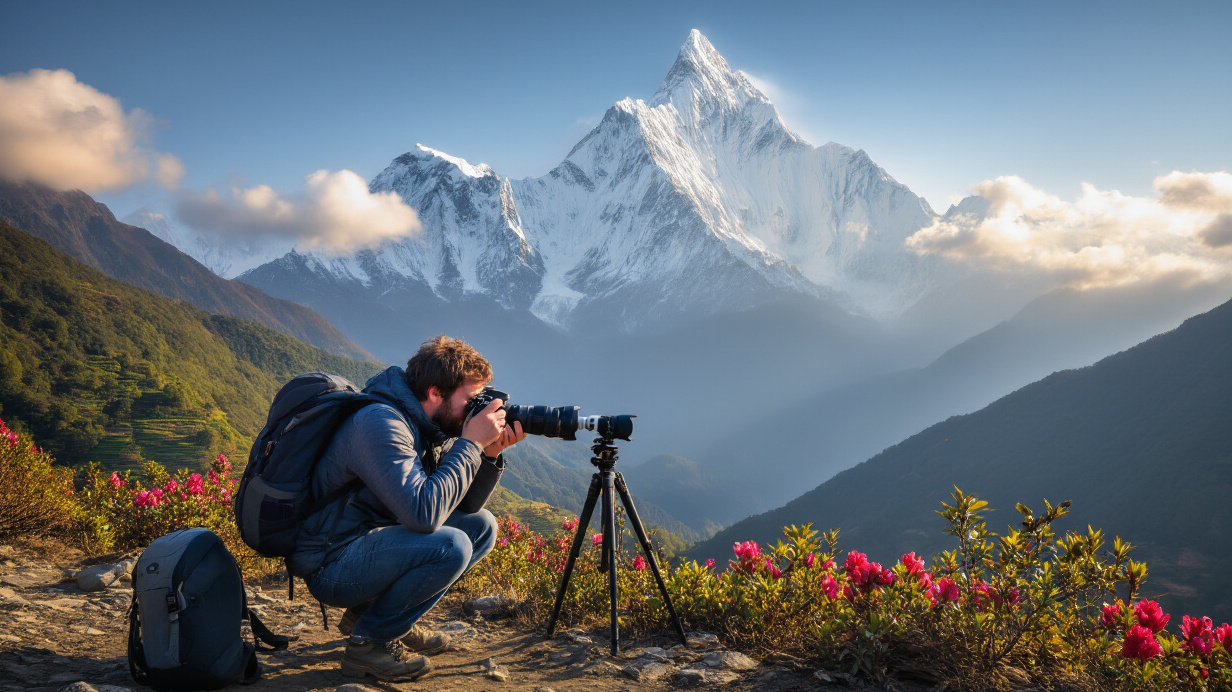
Best viewpoints for sunrise and sunset shots
Our experience on the Mardi Himal Trek has shown us that timing and location are everything when capturing those magical golden hour moments. We've discovered that the best sunrise shots come from Forest Camp, where you can photograph the first light hitting the Annapurna range through the rhododendron canopy. The interplay of shadows and light creates dramatic foreground elements that make your photos stand out.
High Camp offers our absolute favorite sunset viewpoint. We recommend arriving at least 30 minutes before sunset to set up your shots and watch the mountains transform from white to pink to deep orange. The 360-degree views here allow us to capture not just the main peaks but also the entire Himalayan panorama stretching endlessly.
Base Camp presents unique opportunities for both sunrise and sunset photography. We love shooting the prayer flags against the mountain backdrop during golden hour - the vibrant colors pop beautifully against the snow-capped peaks. For the best results, we always bring a tripod and shoot in manual mode to control exposure properly.
Don't overlook the viewpoints between camps. We've captured some of our most stunning shots during the trek itself, especially around the ridge sections where you can frame the mountains with the valley below. Early morning mist often adds an ethereal quality that makes photos truly special.
Wildlife and flora photography opportunities
The diverse ecosystems along our route provide incredible opportunities for nature photography. We've found that the lower elevations around Deurali offer the richest wildlife experiences. Early morning and late afternoon are prime times for spotting Himalayan langurs, and we've had success photographing them by moving slowly and using longer focal lengths to avoid disturbing them.
Bird photography enthusiasts will love the variety we encounter. We regularly spot colorful species like the Himalayan monal, blood pheasants, and various species of laughingthrushes. Our tip is to carry a telephoto lens and be patient - the birds are most active during feeding times in the morning and evening.
The flora changes dramatically with altitude, giving us diverse photographic subjects. In spring, the rhododendron forests burst with color, creating natural galleries of pink, red, and white blooms. We recommend macro photography for capturing the intricate details of alpine flowers at higher elevations. The contrast between delicate flowers and rugged mountain backgrounds creates compelling compositions.
Autumn brings different opportunities with changing leaves and crystal-clear mountain views. We love photographing the golden birch and maple forests that provide warm foreground elements against the stark mountain faces. Remember to respect the environment - we never pick flowers or disturb wildlife for photos.
Cultural photography etiquette with locals
Photographing the warm and welcoming people we meet along the trail requires sensitivity and respect. We always ask permission before taking someone's photo, using simple gestures or basic Nepali phrases like "photo linchu?" (can I take a photo?). Most locals are happy to pose, especially children, but we never assume consent.
We've learned that offering to show people the photos on our camera's LCD screen creates wonderful interactions. Many locals have never seen themselves in a digital photo, and sharing these moments builds genuine connections. We also make it a practice to note down contact information when possible, so we can send photos later.
When photographing daily activities like cooking, farming, or religious practices, we maintain a respectful distance and avoid using flash, which can be intrusive. We focus on capturing authentic moments rather than posed shots, which often results in more meaningful images that tell real stories.
Traditional clothing and cultural practices make for beautiful photographs, but we're always mindful of sacred or private moments. We never photograph inside temples without explicit permission, and we respect when people indicate they don't want their photo taken. Our approach is to build relationships first - often the best photos come after we've spent time chatting and sharing stories with locals over tea.
The Mardi Himal Trek offers us an incredible opportunity to experience Nepal's natural beauty without the crowds that pack other popular routes. We've covered everything from the essential planning stages to the daily walking schedule, and it's clear this trek delivers stunning mountain views, comfortable teahouse stays, and manageable challenges for most fitness levels. The relatively short duration and moderate difficulty make it perfect for trekkers who want authentic Himalayan experiences without committing to longer expeditions.
Our journey through this guide shows that proper preparation makes all the difference in enjoying this trek to its fullest. From booking the right permits to packing smart gear choices, every detail counts when we're walking through rhododendron forests and alpine meadows. The photo opportunities alone make this trek worth considering, especially during clear mornings when Machapuchare and Mardi Himal reveal themselves in all their glory. Start planning your Mardi Himal adventure today – this hidden gem won't stay secret much longer, and we guarantee it will leave you with memories that last a lifetime.
If you need any further information, please contact us by email: at [email protected], Phone: at +977- 985 100 5129 (WhatsApp)




